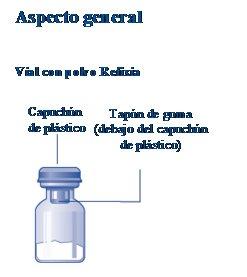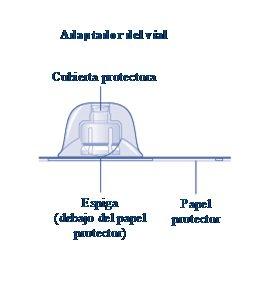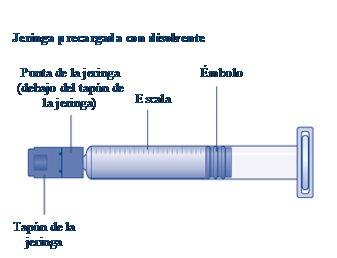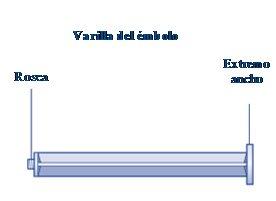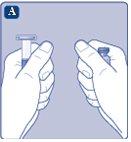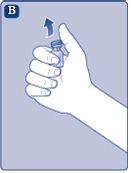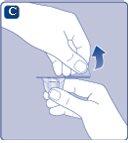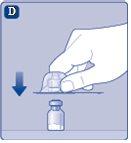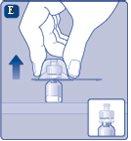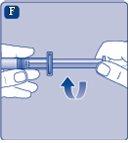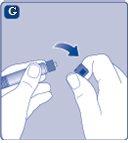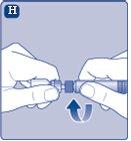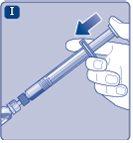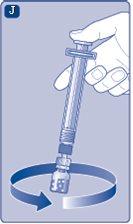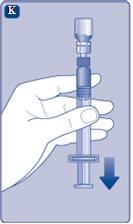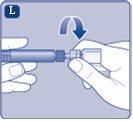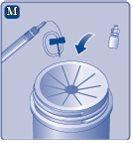
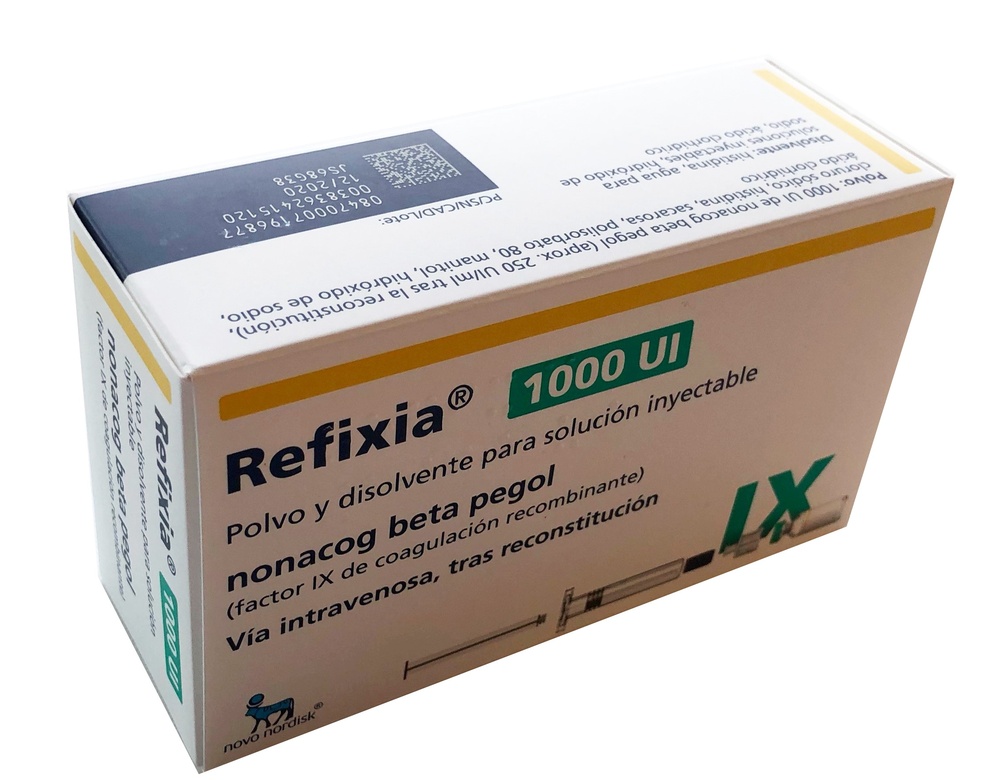
РЕФІКСІЯ 3000 МО ПОРОШОК І РОЗЧИННИК ДЛЯ ПРИГОТУВАННЯ ІН'ЄКЦІЙНОГО РОЗЧИНУ

Запитайте лікаря про рецепт на РЕФІКСІЯ 3000 МО ПОРОШОК І РОЗЧИННИК ДЛЯ ПРИГОТУВАННЯ ІН'ЄКЦІЙНОГО РОЗЧИНУ

Інструкція із застосування РЕФІКСІЯ 3000 МО ПОРОШОК І РОЗЧИННИК ДЛЯ ПРИГОТУВАННЯ ІН'ЄКЦІЙНОГО РОЗЧИНУ
Введення
Опис: інформація для користувача
Рефіксія500МО пилок і розчинник для ін'єкційного розчину
Рефіксія 1000МО пилок і розчинник для ін'єкційного розчину
Рефіксія 2000МО пилок і розчинник для ін'єкційного розчину
Рефіксія 3000МО пилок і розчинник для ін'єкційного розчину
нонаког бета пегол
Цей лікарський засіб підлягає додатковому моніторингу, що прискорить виявлення нової інформації про його безпеку. Ви можете допомогти, повідомляючи про побічні ефекти, яких ви можете зазнати. Остання частина розділу 4 містить інформацію про те, як повідомляти про ці побічні ефекти.
Прочитайте уважно весь опис перед початком використання цього лікарського засобу, оскільки він містить важливу інформацію для вас.
- Збережіть цей опис, оскільки вам може знадобитися знову його прочитати.
- Якщо у вас виникли питання, проконсультуйтеся з вашим лікарем.
- Цей лікарський засіб призначений тільки вам, і не слід давати його іншим людям, навіть якщо вони мають相同ні симптоми, оскільки це може їм нашкодити.
- Якщо ви відчуваєте побічні ефекти, проконсультуйтеся з вашим лікарем, навіть якщо це побічні ефекти, які не вказані в цьому описі. Див. розділ 4.
Зміст опису
- Що таке Рефіксія і для чого вона використовується
- Що потрібно знати перед початком використання Рефіксії
- Як використовувати Рефіксію
- Можливі побічні ефекти
- Збереження Рефіксії
- Зміст упаковки та додаткова інформація
1. Що таке Рефіксія і для чого вона використовується
Що таке Рефіксія
Рефіксія містить активну речовину нонаког бета пегол. Це версія фактору IX тривалої дії. Фактор IX - це білок, який природно міститься в крові і допомагає зупинити кровотечу.
Для чого використовується Рефіксія
Рефіксія використовується для лікування і профілактики епізодів кровотечі у пацієнтів усіх вікових груп з гемофілією Б (вродженою недостатністю фактору IX).
У пацієнтів з гемофілією Б фактор IX відсутній або не функціонує правильно. Рефіксія замінює цей відсутній або неправильно функціонуючий фактор IX і допомагає крові утворювати згустки в місці кровотечі.
2. Що потрібно знати перед початком використання Рефіксії
Не використовуйте Рефіксію
- якщо ви алергічні на активну речовину або на будь-який інший компонент цього лікарського засобу (перелічені в розділі 6).
- якщо ви алергічні на білки хом'яків.
Якщо ви знаходитесь в одній з цих ситуацій або не впевнені в цьому, проконсультуйтеся з вашим лікарем перед використанням цього лікарського засобу.
Попередження і обережність
Відстеження
Важливо зберігати реєстр номера партії Рефіксії. Тому кожного разу, коли ви отримуєте нову упаковку Рефіксії, ви повинні записати дату і номер партії (який вказаний на упаковці після слова "Партія") і зберігати цю інформацію в безпеці.
Алергічні реакції і розвиток інгібіторів
Існує мінімальний ризик того, що може виникнути алергічна реакція на Рефіксію. зупиніть ін'єкцію і зверніться до вашого лікаря або служби швидкої допомоги негайно, якщо ви відчуваєте ознаки алергічної реакції, такі як висип, набряк, свербіж на великій площі шкіри, червоність і/або набряк губ, язика, обличчя або рук, труднощі з ковтанням або диханням, нестача повітря, свистіння, біль у грудній клітці, бліда і холодна шкіра, серцебиття і/або головокружіння.
Ваш лікар може потребувати негайного лікування цих реакцій. Ваш лікар також може призначити аналіз крові для перевірки того, чи ви розвинули інгібітори фактору IX (нейтралізуючі антитіла) проти вашого лікарського засобу, оскільки інгібітори можуть розвиватися разом з алергічними реакціями. Якщо ви розвинули такі інгібітори, ви можете мати більший ризик відчувати алергічні реакції під час майбутнього лікування фактором IX.
Через ризик відчувати алергічні реакції з фактором IX, ваше початкове лікування Рефіксією повинно проводитися в медичному центрі або в присутності медичного працівника, який може надати вам необхідну медичну допомогу в разі алергічної реакції.
Проконсультуйтеся з вашим лікарем негайно, якщо кровотеча не зупиняється так, як очікувалося, або якщо вам потрібно значно збільшити кількість Рефіксії, яку ви потребуєте для зупинення кровотечі. Ваш лікар призначить аналіз крові для перевірки того, чи ви розвинули інгібітори (нейтралізуючі антитіла) проти Рефіксії. Ризик розвитку інгібіторів є більшим у осіб, яких раніше не лікували лікарськими засобами з фактором IX, зазвичай у маленьких дітей.
Кров'яні згустки
Повідомте вашому лікареві, якщо ви маєте одну з наступних обставин, оскільки ризик утворення кров'яних згустків збільшується під час лікування Рефіксією:
- ви недавно пройшли операцію
- у вас є серйозна хвороба, така як захворювання печінки, хвороба серця або рак
- у вас є фактори ризику розвитку хвороби серця, такі як підвищений тиск, ожиріння або куріння.
Ниркова хвороба (нефротичний синдром)
Існує мінімальний ризик розвитку ниркової хвороби, званої "нефротичний синдром", після введення високих доз фактору IX у пацієнтів з гемофілією Б і інгібіторами фактору IX, а також з алергічними реакціями.
Ускладнення, пов'язані з катетером
Якщо у вас є центральний венозний катетер, ви можете розвинути інфекції або кров'яні згустки в місці введення катетера.
Інші лікарські засоби і Рефіксія
Повідомте вашому лікареві, якщо ви використовуєте, недавно використовували або можете використовувати інші лікарські засоби.
Вагітність і лактація
Якщо ви вагітні або годуєте грудьми, вважаєте, що можете бути вагітною або плануєте вагітність, проконсультуйтеся з вашим лікарем перед використанням Рефіксії.
Водіння автомобіля і використання машин
Вплив Рефіксії на здатність водити автомобіль і використовувати машини є мінімальним.
Рефіксія містить натрій
Цей лікарський засіб містить менше 1 ммоль натрію (23 мг) на флакон; це означає, що він практично не містить натрію. У разі лікування кількома флаконами слід враховувати загальний вміст натрію.
3. Як використовувати Рефіксію
Лікар з досвідом лікування пацієнтів з гемофілією Б призначить лікування Рефіксією. Слідуйте точно інструкціям з введення цього лікарського засобу, які вказані вашим лікарем. Якщо у вас виникли питання, проконсультуйтеся з вашим лікарем щодо використання Рефіксії.
Ваш лікар розрахує вашу необхідну дозу залежно від вашої ваги і того, для чого використовується лікарський засіб.
Профілактика кровотечі
Нормальна доза Рефіксії становить 40 міжнародних одиниць (МО) на кілограм ваги. Вона вводиться шляхом ін'єкції один раз на тиждень. Ваш лікар може обрати іншу дозу або змінити частоту введення ін'єкцій залежно від ваших потреб.
Лікування кровотечі
Нормальна доза Рефіксії становить 40 міжнародних одиниць (МО) на кілограм ваги. Можливо, залежно від місця і тяжкості кровотечі, вам потрібно буде більша доза (80 МО на кілограм) або додаткові ін'єкції. Проконсультуйтеся з вашим лікарем щодо дози і кількості ін'єкцій, яких вам потрібно.
Використання у дітей і підлітків
Рефіксія може використовуватися у дітей і підлітків усіх вікових груп. Доза у дітей і підлітків також розрахується залежно від ваги і становить ту ж саму дозу, що і для дорослих.
Як вводиться Рефіксія
Рефіксія доступна у вигляді порошку і розчинника для підготовки розчину (реконституція) і вводиться вену. Див. "Інструкції з використання Рефіксії" для отримання додаткової інформації.
Якщо ви використали більше Рефіксії, ніж потрібно
Якщо ви використали більше Рефіксії, ніж потрібно, зверніться до вашого лікаря.
Якщо вам потрібно значно збільшити кількість Рефіксії, яку ви потребуєте для зупинення кровотечі, повідомте вашому лікареві негайно. Для додаткової інформації див. розділ 2 "Алергічні реакції і розвиток інгібіторів".
Якщо ви забули використати Рефіксію
Якщо ви забули одну дозу, введіть пропущену дозу, як тільки ви про це вспомните. Не вводьте подвійну дозу для компенсації пропущеної дози. Якщо у вас виникли питання, проконсультуйтеся з вашим лікарем.
Якщо ви припинили лікування Рефіксією
Якщо ви припинили лікування Рефіксією, ви припините бути захищеними від кровотечі або існуюча кровотеча може не зупинитися. Не припиняйте лікування Рефіксією без попередньої консультації з вашим лікарем.
Якщо у вас виникли інші питання щодо використання цього лікарського засобу, проконсультуйтеся з вашим лікарем.
4. Можливі побічні ефекти
Як і всі лікарські засоби, цей лікарський засіб може викликати побічні ефекти, хоча не всі люди їх відчувають.
Можливі алергічні реакції на цей лікарський засіб.
Якщо виникають алергічні реакції, введення лікарського засобу потрібно негайно зупинити. Якщо ви відчуваєте які-небудь з наступних ранніх симптомів алергічної реакції (анafilактичної реакції), зверніться до вашого лікаря або служби швидкої допомоги негайно:
- труднощі з ковтанням або диханням
- нестача повітря або свистіння
- біль у грудній клітці
- червоність і/або набряк губ, язика, обличчя або рук
- висип, набряк, свербіж або інші шкірні реакції
- блідість, холодна шкіра, серцебиття і/або головокружіння (низький тиск).
Для дітей, які раніше не лікувалися лікарськими засобами з фактором IX, розвиток інгібіторів (див. розділ 2) є частим (до 1 з 10 пацієнтів). Якщо це відбувається, лікарський засіб може перестати діяти належним чином, і ваша дитина може відчувати тривалу кровотечу. Якщо це відбувається, ви повинні негайно звернутися до вашого лікаря.
Наступні побічні ефекти були виявлені при застосуванні Рефіксії:
Часті побічні ефекти(можуть впливати до 1 з 10 осіб)
- алергічні реакції (гіперчутливість). Це може бути серйозним і загрожувати вашому життю (анafilактичні реакції)
- свербіж (прурит)
- шкірні реакції в місці ін'єкції
- нудота
- втома
- висип
- у дітей, які раніше не лікувалися лікарськими засобами з фактором IX: нейтралізуючі антитіла (інгібітори), анafilактичні реакції.
Рідкі побічні ефекти(можуть впливати до 1 з 100 осіб)
- серцебиття
- припливи.
Повідомлення про побічні ефекти
Якщо ви відчуваєте будь-які побічні ефекти, проконсультуйтеся з вашим лікарем, фармацевтом або медсестрою, навіть якщо це побічні ефекти, які не вказані в цьому описі. Ви також можете повідомити про них безпосередньо через національну систему повідомлення, вказану в додатку V. Повідомляючи про побічні ефекти, ви можете допомогти надати більше інформації про безпеку цього лікарського засобу.
5. Збереження Рефіксії
Тримайте цей лікарський засіб поза досяжністю дітей.
Не використовуйте Рефіксію після закінчення терміну придатності, вказаного на упаковці і на етикетках флакона і предварительно наповненої серингі після слів "Термін придатності". Термін придатності - це останній день місяця, який вказано.
Зберігайте в холодильнику (між 2 °C і 8 °C). Не заморожуйте. Тримайте флакон в зовнішній упаковці, щоб захистити його від світла.
Рефіксія може бути поза холодильником протягом максимального терміну 1 року і зберігатися при кімнатній температурі (до 30 °C). Запишіть на упаковці дату, коли ви вийняли Рефіксію з холодильника і помістили її при кімнатній температурі. Нова дата придатності не повинна бути пізнішою за вказану на картоні. Вийміть цей лікарський засіб, якщо ви не використали його до нової дати придатності. Після зберігання лікарського засобу при кімнатній температурі не повертайте його до холодильника.
Використайте ін'єкцію негайно після підготовки розчину (реконституції). Якщо ви не можете використовувати її негайно, ви повинні використовувати її протягом 24 годин, якщо зберігаєте її в холодильнику при температурі між 2 °C і 8 °C, або протягом 4 годин, якщо зберігаєте її поза холодильником при максимальній температурі 30 °C.
Порошок флакона - це білий або бланшований порошок. Якщо колір порошку змінився, не використовуйте його.
Розчин, підготовлений після реконституції, є прозорим і безколірним або легенько жовтим. Не використовуйте розчин, якщо ви помітили, що він містить частинки або забарвлення.
Лікарські засоби не повинні викидатися в каналізацію або сміття. Спитайте вашого фармацевта, як ви можете позбутися упаковок і лікарських засобів, які вам більше не потрібні. Таким чином, ви допоможете захистити навколишнє середовище.
6. Зміст упаковки та додаткова інформація
Склад.Refiksiya
- Активний інгредієнт - нонаког бета пегол (чоловічий фактор згортання крові [ADNr] пегільований). Кожна флакона Refiksiya містить 500 ОД, 1000 ОД, 2000 ОД або 3000 ОД нонакогу бета пеголу, що відповідає приблизно 125 ОД/мл, 250 ОД/мл, 500 ОД/мл або 750 ОД/мл відповідно після реконституції з гістидиновим розчином.
- Інші компоненти порошку - хлорид натрію, гістидин, сукроза, полісорбат 80, манітол, гідроксид натрію та хлоридна кислота. Див. розділ 2 «Refiksiya містить натрій».
- Компоненти стерильного розчинника - гістидин, вода для ін'єкційних препаратів, гідроксид натрію та хлоридна кислота.
Вигляд Refiksiya та вміст упаковки
- Refiksiya постачається у вигляді порошку та розчинника для ін'єкційної розв'язки (500 ОД, 1000 ОД, 2000 ОД або 3000 ОД порошку у флаконі та 4 мл розчинника у попередньо заповненому шприці, одна голка з адаптером для флакона; розмір упаковки 1).
- Порошок білого або білуватого кольору, а розчинник прозорий та безбарвний.
Власник дозволу на продаж та відповідальність за виробництво
Novo Nordisk A/S
Novo Allé
DK-2880 Багсверд, Данія
Дата останнього перегляду цієї інструкції:
Інші джерела інформації
Детальна інформація про цей лікарський засіб доступна на сайті Європейського агентства з лікарських засобів: http://www.ema.europa.eu.
Інструкції з використанняRefiksiya Вважно прочитайте ці інструкції перед використанням Refiksiya. Refiksiya постачається у вигляді порошку. Перед ін'єкцією потрібно підготувати розв'язку (реконституйовану) з розчинником, який постачається у шприці. Розчинник - гістидинова розв'язка. Реконституйовану розв'язку потрібно вводити в вену (інтравенозна ін'єкція [IV]). Елементи цієї упаковки призначені для реконституції та ін'єкції Refiksiya. Вам також знадобиться обладнання для внутрішньовенної інфузії (труби та голка-бабочка), стерильні серветки з алкоголем, гази та бинти. Це обладнання не входить до складу упаковки Refiksiya. Не використовуйте обладнання без належної підготовки від вашого лікаря або медсестри. Завжди мийте руки та переконайтеся, що навколишня територія чиста. Під час підготовки та ін'єкції лікарського засобу безпосередньо у вени важливо використовувати чисту та асептичну техніку.Неправильна техніка може призвести до введення бактерій, які можуть інфікувати кров. Не відкривайте обладнання до тих пір, поки ви не будете готові до його використання. Не використовуйте обладнання, якщо воно впало або пошкоджено.Використовуйте нову упаковку замість нього. Не використовуйте обладнання, якщо воно просрочено.Використовуйте нову упаковку замість нього. Термін придатності вказаний на зовнішній упаковці, флаконі, адаптері для флакона та попередньо заповненому шприці. Не використовуйте обладнання, якщо ви підозрюєте, що воно забруднено.Використовуйте нову упаковку замість нього. Не викидайте жоден елемент до тих пір, поки не буде введена реконституйована розв'язка. Обладнання для одного разу використання. | |
Вміст Упаковка містить:
| |
| |
|
|
|
|
Якщо паперовий захисний ковпачок не повністю закритий або пошкоджений, не використовуйте адаптер для флакона. Не видаліть адаптер для флакона з захисного ковпачка пальцями.Якщо ви торкнетеся штифта адаптера для флакона, ви можете передати бактерії з ваших пальців. |
|
Як тільки він буде встановлений, не видаліть адаптер для флакона з флакона. |
|
Видаліть захисний ковпачокз адаптера для флакона. Не видаліть адаптер для флакона з флаконапід час видалення захисного ковпачка. |
|
|
|
Якщо ковпачок шприца слабо прикріплений або відсутній, не використовуйте попередньо заповнений шприц. |
|
|
|
|
|
Не агітуйте флакон, оскільки це може створити піну.
|
|
Рекомендується використовувати Refiksiya негайно після реконституції,оскільки, якщо вона залишається, лікарський засіб може втратити стерильність та спричинити інфекції. Якщо ви не можете використовувати реконституйовану розв'язку Refiksiya негайно,ви повинні використовувати її протягом 4 годин, якщо вона зберігається при кімнатній температурі (до 30 °C), та протягом 24 годин, якщо вона зберігається в холодильнику (між 2 °C та 8 °C). Зберігайте реконституйований продукт у флаконі. Не заморожуйте реконституйовану розв'язку Refiksiya та не зберігайте її у шприцях. Зберігайте реконституйовану розв'язку Refiksiya вдали від прямого світла. Якщо ваша доза вимагає більше одного флакона, повторіть кроки Адо Йз додатковими флаконами, адаптерами для флакона та попередньо заповненими шприцами до тих пір, поки не буде досягнута необхідна доза. | |
Якщо в будь-який момент є повітря у шприці, введите повітря назад у флакон.
|
|
|
|
Тепер Refiksiya готова до введення в вену.
Введення Refiksiya через з'єднання без голки для внутрішньовенних катетерів (IV) Обережно:попередньо заповнений шприц виготовлений з скла та призначений для сумісності зі стандартними з'єднаннями Luer-Lock. Деякі з'єднання без голки, які мають внутрішній штифт, не сумісні з попередньо заповненим шприцем. Ця не сумісність може перешкодити введенню лікарського засобу та/або пошкодити з'єднання без голки. Введення розв'язки через пристрій доступу до центральної вени (DAVC), такий як центральний венозний катетер або субкутанний порт:
| |
Видалення
Не викидайте її у домашній смітник. |
|
Не розбирайте обладнання перед видаленням. Не повторно використовуйте обладнання. |
- Країна реєстрації
- Діючі речовини
- Потрібен рецептТак
- Виробник
- Інформація є довідковою і не є медичною порадою. Перед прийомом будь-яких препаратів обов'язково проконсультуйтеся з лікарем. Oladoctor не несе відповідальності за медичні рішення, прийняті на основі цього контенту.
- Альтернативи до РЕФІКСІЯ 3000 МО ПОРОШОК І РОЗЧИННИК ДЛЯ ПРИГОТУВАННЯ ІН'ЄКЦІЙНОГО РОЗЧИНУФорма випуску: РОЗЧИН ДЛЯ ІН'ЄКЦІЙ, 1000 МОДіючі речовини: coagulation factor IXВиробник: Swedish Orphan Biovitrum Ab (Publ)Потрібен рецептФорма випуску: РОЗЧИН ДЛЯ ІН'ЄКЦІЙ, 2000 МОДіючі речовини: coagulation factor IXВиробник: Swedish Orphan Biovitrum Ab (Publ)Потрібен рецептФорма випуску: РОЗЧИН ДЛЯ ІН'ЄКЦІЙ, 250 МОДіючі речовини: coagulation factor IXВиробник: Swedish Orphan Biovitrum Ab (Publ)Потрібен рецепт
Аналоги РЕФІКСІЯ 3000 МО ПОРОШОК І РОЗЧИННИК ДЛЯ ПРИГОТУВАННЯ ІН'ЄКЦІЙНОГО РОЗЧИНУ в інших країнах
Найкращі аналоги з тією самою діючою речовиною та терапевтичним ефектом.
Аналог РЕФІКСІЯ 3000 МО ПОРОШОК І РОЗЧИННИК ДЛЯ ПРИГОТУВАННЯ ІН'ЄКЦІЙНОГО РОЗЧИНУ у Польща
Аналог РЕФІКСІЯ 3000 МО ПОРОШОК І РОЗЧИННИК ДЛЯ ПРИГОТУВАННЯ ІН'ЄКЦІЙНОГО РОЗЧИНУ у Україна
Лікарі онлайн щодо РЕФІКСІЯ 3000 МО ПОРОШОК І РОЗЧИННИК ДЛЯ ПРИГОТУВАННЯ ІН'ЄКЦІЙНОГО РОЗЧИНУ
Консультація щодо дозування, побічних ефектів, взаємодій, протипоказань та поновлення рецепта на РЕФІКСІЯ 3000 МО ПОРОШОК І РОЗЧИННИК ДЛЯ ПРИГОТУВАННЯ ІН'ЄКЦІЙНОГО РОЗЧИНУ – за рішенням лікаря та згідно з місцевими правилами.




